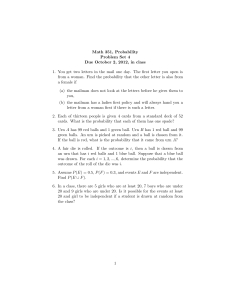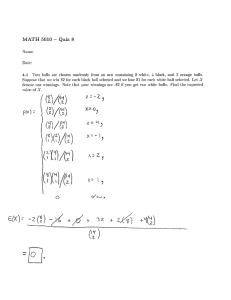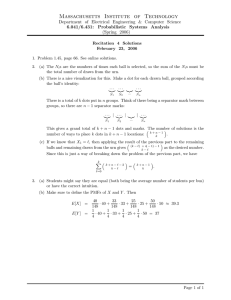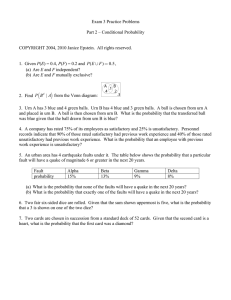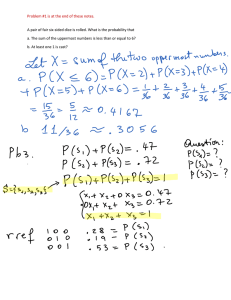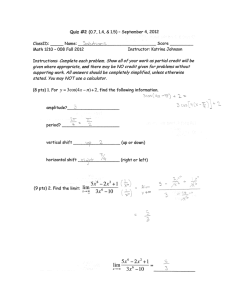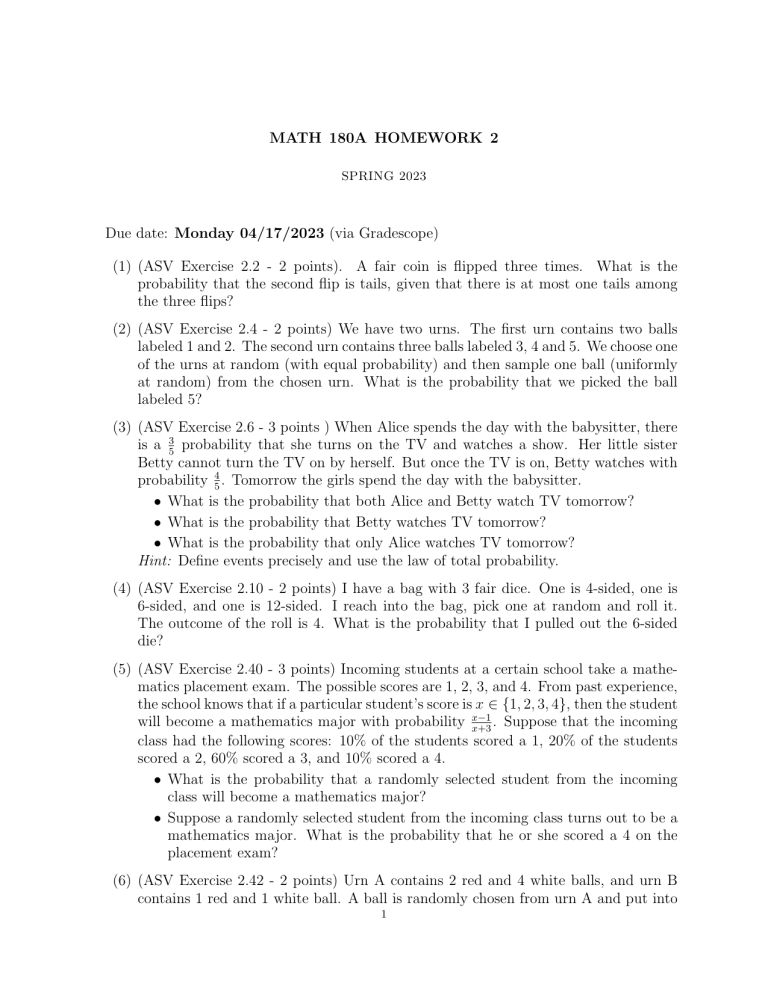
MATH 180A HOMEWORK 2
SPRING 2023
Due date: Monday 04/17/2023 (via Gradescope)
(1) (ASV Exercise 2.2 - 2 points). A fair coin is flipped three times. What is the
probability that the second flip is tails, given that there is at most one tails among
the three flips?
(2) (ASV Exercise 2.4 - 2 points) We have two urns. The first urn contains two balls
labeled 1 and 2. The second urn contains three balls labeled 3, 4 and 5. We choose one
of the urns at random (with equal probability) and then sample one ball (uniformly
at random) from the chosen urn. What is the probability that we picked the ball
labeled 5?
(3) (ASV Exercise 2.6 - 3 points ) When Alice spends the day with the babysitter, there
is a 35 probability that she turns on the TV and watches a show. Her little sister
Betty cannot turn the TV on by herself. But once the TV is on, Betty watches with
probability 54 . Tomorrow the girls spend the day with the babysitter.
• What is the probability that both Alice and Betty watch TV tomorrow?
• What is the probability that Betty watches TV tomorrow?
• What is the probability that only Alice watches TV tomorrow?
Hint: Define events precisely and use the law of total probability.
(4) (ASV Exercise 2.10 - 2 points) I have a bag with 3 fair dice. One is 4-sided, one is
6-sided, and one is 12-sided. I reach into the bag, pick one at random and roll it.
The outcome of the roll is 4. What is the probability that I pulled out the 6-sided
die?
(5) (ASV Exercise 2.40 - 3 points) Incoming students at a certain school take a mathematics placement exam. The possible scores are 1, 2, 3, and 4. From past experience,
the school knows that if a particular student’s score is x ∈ {1, 2, 3, 4}, then the student
will become a mathematics major with probability x−1
. Suppose that the incoming
x+3
class had the following scores: 10% of the students scored a 1, 20% of the students
scored a 2, 60% scored a 3, and 10% scored a 4.
• What is the probability that a randomly selected student from the incoming
class will become a mathematics major?
• Suppose a randomly selected student from the incoming class turns out to be a
mathematics major. What is the probability that he or she scored a 4 on the
placement exam?
(6) (ASV Exercise 2.42 - 2 points) Urn A contains 2 red and 4 white balls, and urn B
contains 1 red and 1 white ball. A ball is randomly chosen from urn A and put into
1
2
SPRING 2023
urn B, and a ball is then chosen from urn B. What is the conditional probability that
the transferred ball was white given that a white ball is selected from urn B?
(7) (3 points) Consider the Monty Hall problem. In the case that the door you initially
chose hid the valuable prize, suppose that Monty opens one of the other two doors
for you not uniformly at random, but rather opens the second door with probability
p and the third door with probability 1 − p, for some p ∈ [0, 1]. How does this affect
your chances of getting the prize when switching?
(8) (ASV Exercise 2.12 - 3 points) We choose a number from the set {1, 2, 3, . . . , 100}
uniformly at random and denote this number by X. For each of the following choices
decide whether the two events in questions are independent or not.
• A = {X is even}, B = {X is divisible by 5}.
• C = {X is even}, D = {X is divisible by 5}, E = {X is divisible by 7}.
• F = {X has two digits}, G = {X is divisible by 3}.
• H = {X is prime}, I = {X has a digit 5}. Note that 1 is not a prime number.
